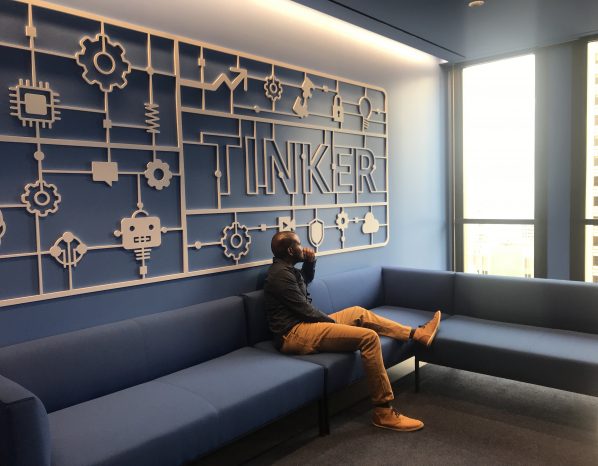
A few minutes before meeting with executives of a major corporation, my heart raced uncontrollably. At the moment, I couldn’t tell what provoked the feeling, but it did cause me to have subpar performance. In the debrief with my sales leader after the meeting, I concluded I was nervous, so we discussed strategies to calm the nerves. Reflecting on that meeting, I now realize I wasn’t nervous; I was intimidated by the executives’ titles and accomplishments. This aha moment came to me while reading Emotional Intelligence for Sales Success: Connect with Customers and Get Results. I misidentified the emotion I was feeling at that time and spent hours working to improve the wrong thing. This misstep was my moment of emotional unintelligence.
The most successful sales leaders I know exude so much emotional intelligence it almost seems effortless. One of the many reasons these leaders are so good is their ability to identify the right emotions they feel and process it accordingly. Reading Colleen’s book and supporting research, the reality is that emotional intelligence is like any skill; it takes practice and repetition to become proficient. Colleen defines Emotional Intelligence (EI) as “the ability to recognize your emotions and to correctly identify the emotion you’re feeling and know why you’re feeling it. It’s the skill of understanding what trigger or event is causing the emotion and the impact of that emotion on yourself and others; and then adjusting your emotional response to the trigger or event to achieve the best outcomes.”
She goes on to share three action steps for improving emotional intelligence:
- Schedule Downtime: The key to downtime is creating space for yourself and becoming more self-aware. According to Colleen, downtime allows you to ask yourself thoughtful questions to gain clarity on your sales behavior and outcomes. One of the ways I’ve put this into practice is scheduling time on my calendar to think. At first, it seemed like a strange concept to schedule time to think. However, having this time has inspired me to generate creative ideas to impact clients and colleagues positively. It has also allowed me to work on my mental health and refine my goals and aspirations. Also, by putting this time on the calendar, I treat it like any other important client meeting by showing up prepared. Being prepared means showing up with thought-provoking questions and adding a few from the book below:
- What was the reason for my reaction to the prospect or customer?
- What would have been a better response during the sales meeting?
- What did I do well, and how do I repeat that behavior?
- Create Technology-free Zones – Salespeople are naturally attached to smartphones to quickly respond to emails, slack messages, texts, telegrams, WhatsApp, facetime, and phone calls from clients. While it’s essential to be available to your customers promptly, it is just as crucial to make time to be available for YOU. This action step reminds me of an article I wrote about self-care. In the article, I described how prioritizing self-care helped me be a better customer advocate and a team player.
- Name the Specific Emotion – This action hits home for me because it is about naming the specific emotion and understanding WHY the emotion is present. By correctly diagnosing the feeling, one can build the right infrastructure to channel and process the emotion. Earlier in the article, I described misidentifying the emotion I felt during my meeting with those executives. The reason why I felt intimidated was simply a lack of experience. My experience over the years nurturing executive relationships has enabled me to become less intimidated. Although the feeling may show up unexpectedly, I’ve learned to correctly identify it and take the necessary steps to control and channel it. When it’s all said and done, executives are people.

I am humbled by the journey I’ve been on so far and look forward to turning my emotional unintelligence into many more learning moments.
Cheers to selling!




 messages, so we became texting buddies. Another said Slack, so I joined their channel. Another said phone calls
messages, so we became texting buddies. Another said Slack, so I joined their channel. Another said phone calls , the other said email
, the other said email , and her colleague said fax machine
, and her colleague said fax machine . Just kidding about the last one, no one uses fax machines anymore; but if they did, I’ll get a fax machine.
. Just kidding about the last one, no one uses fax machines anymore; but if they did, I’ll get a fax machine. This concept of meeting your customers where they are would hold true even after things get back to normal. My recommendation is to discover your customer or potential client’s preferred method of staying connected and adapt to it.
This concept of meeting your customers where they are would hold true even after things get back to normal. My recommendation is to discover your customer or potential client’s preferred method of staying connected and adapt to it.  , nurses
, nurses taught me about selling
taught me about selling

 ) the game established a foundation for a healthy relationship that continues to blossom. This executive has become a friend and continues to inspire me to improve my game in business and life. He even kindly donated to a table tennis charity tournament I helped organize to raise money for
) the game established a foundation for a healthy relationship that continues to blossom. This executive has become a friend and continues to inspire me to improve my game in business and life. He even kindly donated to a table tennis charity tournament I helped organize to raise money for 



 )
)









